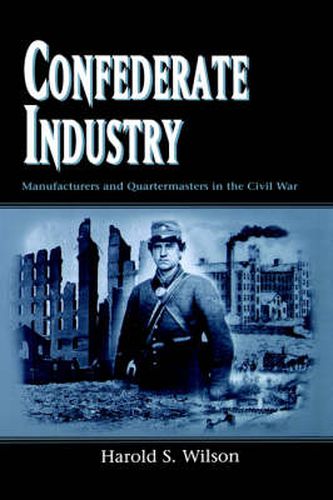Readings Newsletter
Become a Readings Member to make your shopping experience even easier.
Sign in or sign up for free!
You’re not far away from qualifying for FREE standard shipping within Australia
You’ve qualified for FREE standard shipping within Australia
The cart is loading…






This title is printed to order. This book may have been self-published. If so, we cannot guarantee the quality of the content. In the main most books will have gone through the editing process however some may not. We therefore suggest that you be aware of this before ordering this book. If in doubt check either the author or publisher’s details as we are unable to accept any returns unless they are faulty. Please contact us if you have any questions.
By 1860 the South ranked high among the developed countries of the world in per capita income and life expectancy and in the number of railroad miles, telegraph lines, and institutions of higher learning. Only the major European powers and the North had more cotton and woolen spindles. This book examines the Confederate military’s program to govern this prosperous industrial base by a quartermaster system. By commandeering more than half the South’s produced goods for the military, the quartermaster general, in a drift toward socialism, appropriated hundreds of mills and controlled the flow of southern factory commodities. The most controversial of the quartermasters general was Colonel Abraham Charles Myers. His iron hand set the controls of southern manufacturing throughout the war. His capable successor, Brigadier General Alexander R. Lawton, conducted the first census of Confederate resources, established the plan of production and distribution, and organized the Bureau of Foreign Supplies in a strategy for importing parts, machinery, goods, and military uniforms. While the Confederacy mobilized its mills for military purposes, the Union systematically planned their destruction. The Union blockade ended the effectiveness of importing goods, and under the Union army’s General Order 100 Confederate industry was crushed. The great antebellum manufacturing boom was over. Scarcity and impoverishment in the postbellum South brought manufacturers to the forefront of southern political and ideological leadership. Allied for the cause of southern development were former Confederate generals, newspaper editors, educators, and President Andrew Johnson himself, an investor in a southern cotton mill. Against this postwar mania to rebuild, this book tests old assumptions about southern industrial re-emergence. It discloses, even before the beginnings of Radical Reconstruction, that plans for a New South with an urban, industrialized society had been established on the old foundations and on an ideology asserting that only science, technology, and engineering could restore the region. Within this philosophical mold, Henry Grady, one of the New South’s great reformers, led the way for southern manufacturing. By the beginning of the First World War half the nation’s spindles lay within the former Confed-eracy, home of a new boom in manufacturing and the land of America’s staple crop, cotton.
$9.00 standard shipping within Australia
FREE standard shipping within Australia for orders over $100.00
Express & International shipping calculated at checkout
This title is printed to order. This book may have been self-published. If so, we cannot guarantee the quality of the content. In the main most books will have gone through the editing process however some may not. We therefore suggest that you be aware of this before ordering this book. If in doubt check either the author or publisher’s details as we are unable to accept any returns unless they are faulty. Please contact us if you have any questions.
By 1860 the South ranked high among the developed countries of the world in per capita income and life expectancy and in the number of railroad miles, telegraph lines, and institutions of higher learning. Only the major European powers and the North had more cotton and woolen spindles. This book examines the Confederate military’s program to govern this prosperous industrial base by a quartermaster system. By commandeering more than half the South’s produced goods for the military, the quartermaster general, in a drift toward socialism, appropriated hundreds of mills and controlled the flow of southern factory commodities. The most controversial of the quartermasters general was Colonel Abraham Charles Myers. His iron hand set the controls of southern manufacturing throughout the war. His capable successor, Brigadier General Alexander R. Lawton, conducted the first census of Confederate resources, established the plan of production and distribution, and organized the Bureau of Foreign Supplies in a strategy for importing parts, machinery, goods, and military uniforms. While the Confederacy mobilized its mills for military purposes, the Union systematically planned their destruction. The Union blockade ended the effectiveness of importing goods, and under the Union army’s General Order 100 Confederate industry was crushed. The great antebellum manufacturing boom was over. Scarcity and impoverishment in the postbellum South brought manufacturers to the forefront of southern political and ideological leadership. Allied for the cause of southern development were former Confederate generals, newspaper editors, educators, and President Andrew Johnson himself, an investor in a southern cotton mill. Against this postwar mania to rebuild, this book tests old assumptions about southern industrial re-emergence. It discloses, even before the beginnings of Radical Reconstruction, that plans for a New South with an urban, industrialized society had been established on the old foundations and on an ideology asserting that only science, technology, and engineering could restore the region. Within this philosophical mold, Henry Grady, one of the New South’s great reformers, led the way for southern manufacturing. By the beginning of the First World War half the nation’s spindles lay within the former Confed-eracy, home of a new boom in manufacturing and the land of America’s staple crop, cotton.